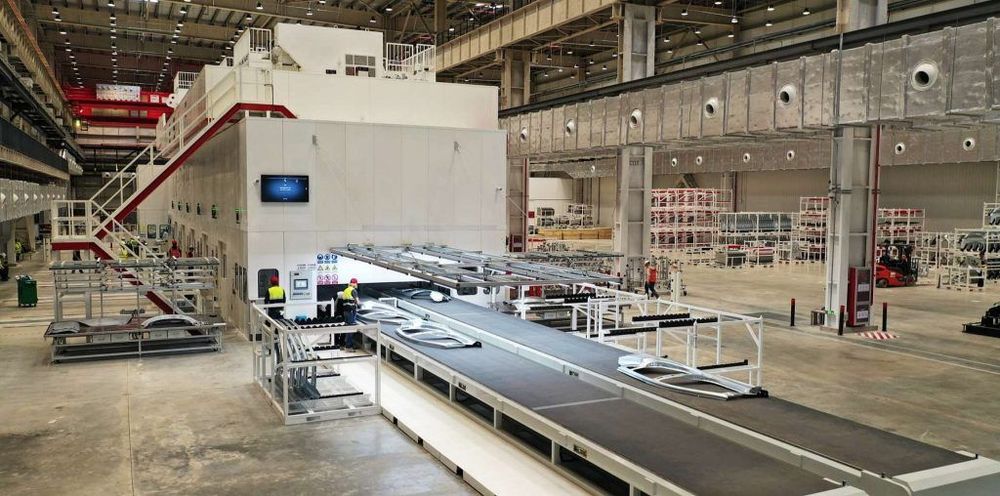A method and apparatus for ameliorating the aging process and the effects of aging and maintaining the integrity of health is provided. The method includes subjecting biological systems to alternating and steady magnetic fields having flux densities ranging from 10-6 gauss to 10-20 gauss and frequencies from 0 Hertz to 1014 Hertz. The calculation is made with reference to the equation mc2 =Bvlq, where m=mass; c=speed of light; B=magnetic flux density; v=inertial velocity of the mass contained in l; l=length of the conductive body; q=unity. The process begins by targeting the larger targets first and then diminishing the field magnitude slowly and incrementally according to the targets. The frequency when AC is indicated is calculated with the cyclotron resonance formula, fc =qB/(2πm). The apparatus includes a specially constructed pool or tub for generating the specific magnetic flux necessary for treatment. Orientation of the patient with reference to North, South, East and West is varied. The earth’s position in relation to the sun is taken into account. The patient may be in an upright, prone or swimming position depending on the specific treatment scheme.
Fyodor R.
Scientists recently identified the oldest material on Earth: stardust that’s 7 billion years old, tucked away in a massive, rocky meteorite that struck our planet half a century ago.
🏺Stardust
Stars have life cycles. They’re born when bits of dust and gas floating through space find each other and collapse in on each other and heat up. They burn for millions to billions of years, and then they die. When they die, they pitch the particles that formed in their winds out into space, and those bits of stardust eventually form new stars, along with new planets and moons and meteorites. And in a meteorite that fell fifty years ago in Australia, scientists have now discovered stardust that formed 5 to 7 billion years ago — the oldest solid material ever found on Earth.
The idea of harvesting a clean and efficient form of energy from the Moon has stimulated science fiction and fact in recent decades. Unlike Earth, which is protected by its magnetic field, the Moon has been bombarded with large quantities of Helium-3 by the solar wind. It is thought that this isotope could provide safer nuclear energy in a fusion reactor, since it is not radioactive and would not produce dangerous waste products.
The Apollo programme’s own geologist, Harrison Schmidt, has repeatedly made the argument for Helium-3 mining, whilst Gerald Kulcinski at the University of Wisconsin-Madison is another leading proponent. He has created a small reactor at the Fusion Technology Institute, but so far it has not been possible to create the helium fusion reaction with a net power output.
This has not stopped the search for Helium-3 from being a motivating factor in space exploration, however. Apart from the traditional space-faring nations, the India has previously indicated its interest in mining the lunar surface. The use of Moon resources was also part of Newt Gingrich’s unsuccessful candidacy for the Republican party’s nomination for the US presidency in 2012.
Stimulating the growth of blood vessels in the brain through the use of fibroblast growth factor 1 (FGF1) may hold promise as a strategy for treating Parkinson’s disease, according to a white paper released by Zhittya Genesis Medicine (ZGM). Clinical trials testing this theory are being planned.
The white paper is titled “Parkinson’s Disease: Therapeutic Angiogenesis as a Disease Modifying, Breakthrough Therapy?”
It’s pretty difficult to believe it at this point, but there are still groups of Tesla critics who insist that Gigafactory 3 is not really fully operational. A central part of this thesis is the allegation that Gigafactory 3 does not have a stamping press, which means that Tesla’s China team is only assembling cars in the Shanghai-based factory using pre-stamped panels from Fremont.
A recently released video from Tesla China has just decimated these allegations in a subtle but definitive manner. The clip was short, less than 30 seconds long, but it showed a busy stamping press operating in Gigafactory 3. The video was released in China, and shared on Twitter by Tesla enthusiast @JayinShanghai.
Nobel laureate James Heckman demonstrated a connection between developing non-cognitive skills in early childhood and success in life. He advocates supporting parents, to lift children from poverty.
In September 2015, as the Millennium Development Goals expired and the 2030 Agenda for Sustainable Development (link is external) was being adopted, USAID put forward an ambitious Vision for Ending Extreme Poverty.
Boston Dynamics’ creation is starting to sniff out its role in the workforce: as a helpful canine that still sometimes needs you to hold its paw.
Swiss Post and Matternet will once again resume using drones to deliver lab samples between hospital facilities and labs after being suspending in August 2019 after two crashes. Flights will resume on January 27th.








